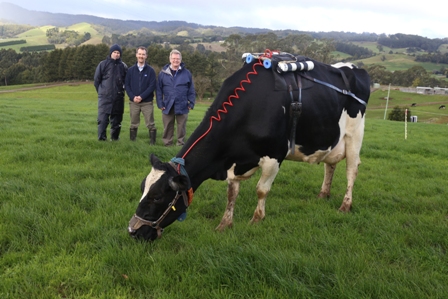1. Speed of Glacier Retreat ‘Historically Unprecedented’
Glaciers observed in a recent study are losing between half a meter and one meter of ice thickness every year – two to three times more than the corresponding average of the 20th century.
The concern is for sea level rise, water for irrigation in fertile river valleys, changes in mountain ecology and loss of tourist income.
As one example, the Jakobshavn glacier in Greenland:
- is now moving at the rate of 46 meters a day, 17 kilometers a year, which is twice the speed recorded in 2003, which in turn was twice as fast as measured in 1997.
2. NASA launches OMG to study Greenland melting
OMG stands for Oceans Melting Greenland, a four-year study which will deploy 200 robot probes to measure the full extent of climate change in the region. The aim is to get a handle on “factors involving the sea that laps the bases of its great ice masses, and which is also heating up, are less well understood.”
The volume of ice loss is huge compared to glaciers elsewhere. The amount of ice Greenland lost in 2007 was “the equivalent of two times all the ice in the Alps”.
3. Green jobs
Quiggin takes a look:
- I was struck recently to read that, in the United States, the solar power industry now employs 174 000 people. That’s twice as many as coal mining. And, while these aren’t direct substitutes, they are, it would appear, broadly similar kinds of industries in the sense that the core workforce is dominated by male manual and trades workers.
Looking quickly at similar stats for Australia, I found that the numbers were reversed. According to the ABS, there were just under 40 000 Australians employed in the coal mining industry in May 2015, down from a peak of 60 000 in 2012, but well above the 20 000 or so employed in the early 2000s.
The Clean Energy Council estimates around 20 000 jobs in the renewables sector in 2014 – that’s up from virtually zero before 2010. So, broadly speaking growth in renewables has offset the decline in coal mining.
4. Cutting methane from cow burps
wilful sent me the link to his local paper. I Googled and found a longer article in The Age. Methane from cow burps can be cut by 30% through just one gram a day of a feed additive additive developed by Swiss company, DSM Nutritional Products.
The additive has no effect on feed intake or milk production.
Australian scientists worked with Penn State University on the project. Part of the trick was to work out how to measure the emissions. Here’s one of the happy cows:

5. Aussie artificial leaf technology
Researchers at Monash University have published a breakthrough paper detailing their success in separating hydrogen and oxygen using water and sunlight in a process which artificially mimics photosynthesis. Seems they’ve worked out a way of using nickel as a catalyst.
Professor Douglas MacFarlane:
- “The idea of making a fuel directly from sunlight is rapidly becoming practical at a household and petrol station level, and even at the solar farm level.”
I don’t understand this bit:
- He said that “in the space of 30 years we may see significant carbon storage building up” as a result of the carbon capture and storage technologies being developed to sequester carbon from coal-fired power stations, and that there’s the potential ‘artificial leaf’ technology could use this as a fuel.
6. The trillion-dollar hole in Abbott’s climate policy logic
Abbott consistently terms Labor’s climate policies as “simply catastrophic” economically and his own policies as economically responsible. Sophie Vorrath at RenewEconomy summarises a Citibank report that blows a big hole in his logic. There are lots of large numbers and econospeak, but the bottom line is that the world would save heaps with effective climate action and avoid “potentially enormous liabilities”.


The blurb on artificial leaf tech sounded like a researcher chasing funds and grasping at all the straws to me. From my point of view the key question is how hydrogen costs compare with more conventional renewable hydrogen production alternatives.
The stuff about oxygen is laughable. All the oxygen produced will balance the oxygen that is consumed when using the hydrogen.
(1). 47 metres a day?? That’s no longer the Jabobshavn Glacier, that’s now become the Jakobshavn Ice-River.
Welcome to “Waterworld”, folks. Start swimming.
(2). Somebody in NASA had a sense of humour naming that 4-year study, Oceans Melting Greenland …. OMG!!!
(5) So what are going to do when a significant part of the world’s water has been separated into Hydrogen and Oxygen? Not in our lifetimes perhaps – but it’s still a question that needs to be asked.
GB, 46 metres a day, to be pedantic, but certainly fast.
GB, I don’t have any chemistry to speak of, but surely hydrogen when it burns oxidises and becomes H2O.
John, on the artificial leaf tech, I’ll defer to your expertise in chemical engineering.